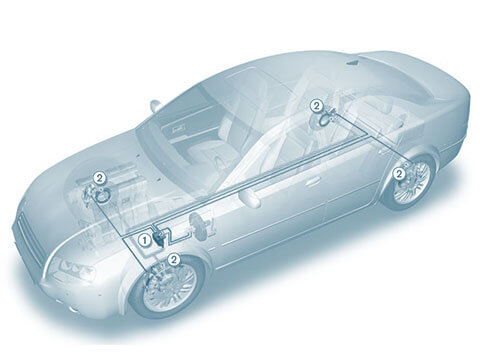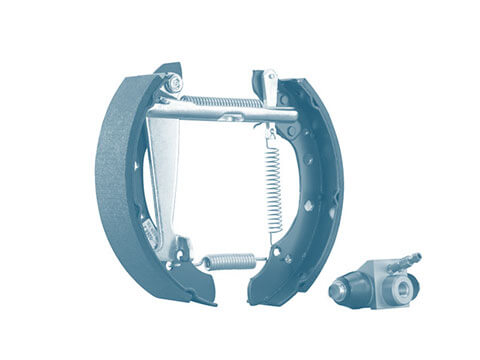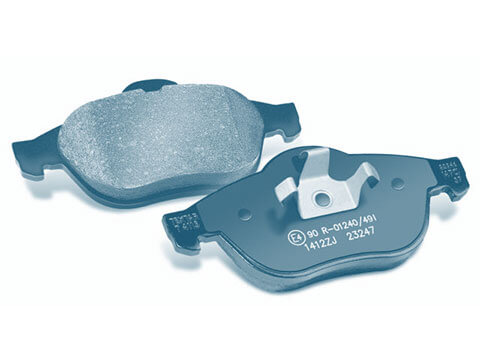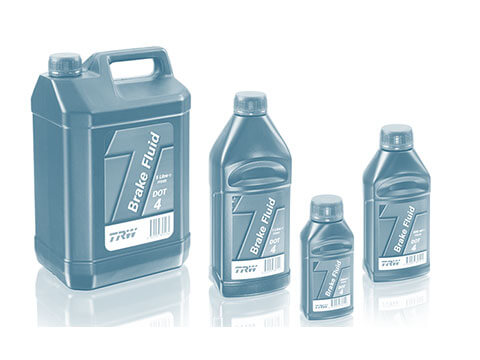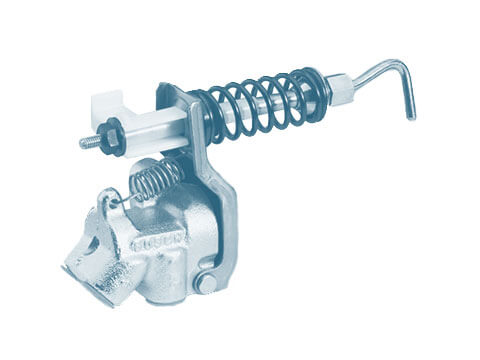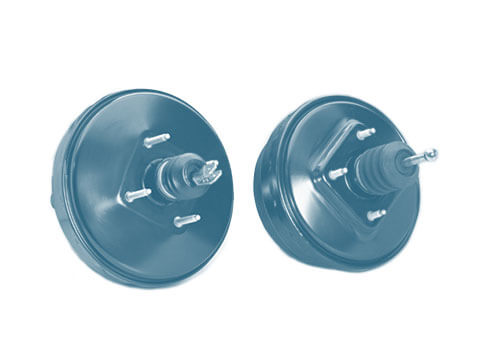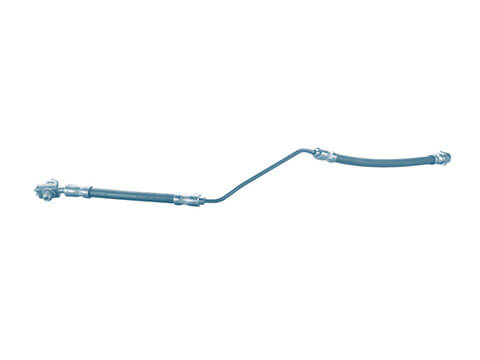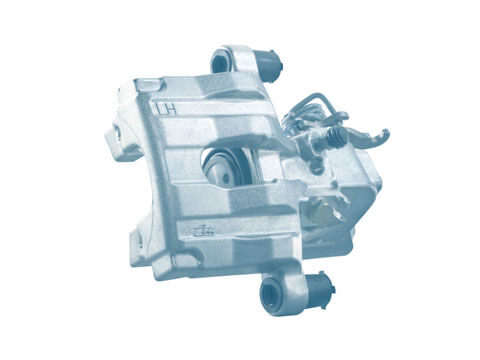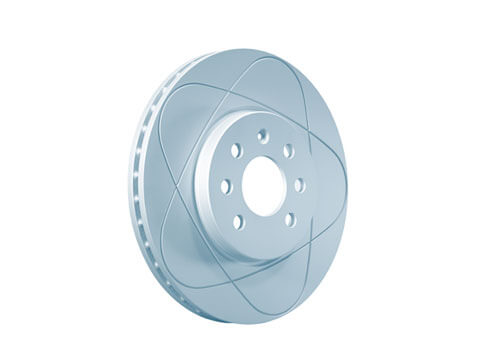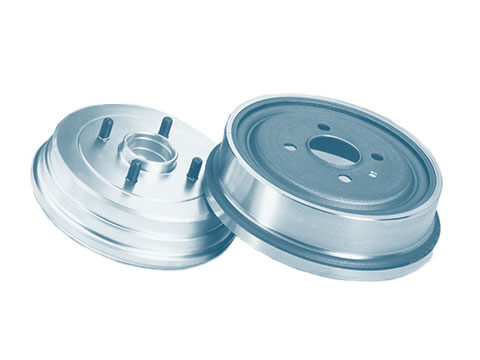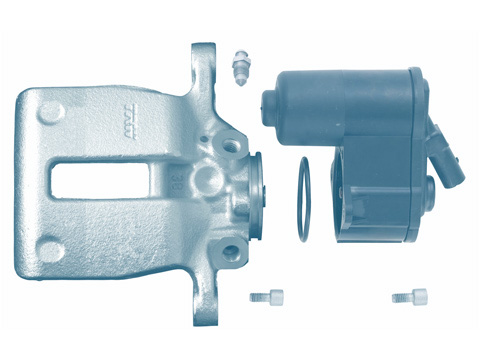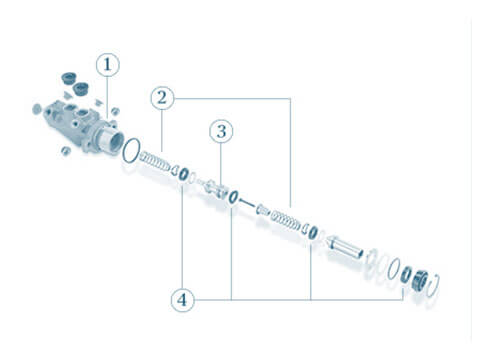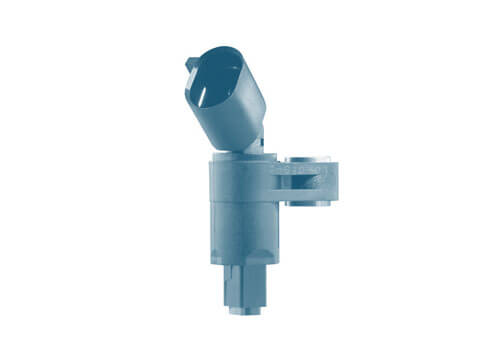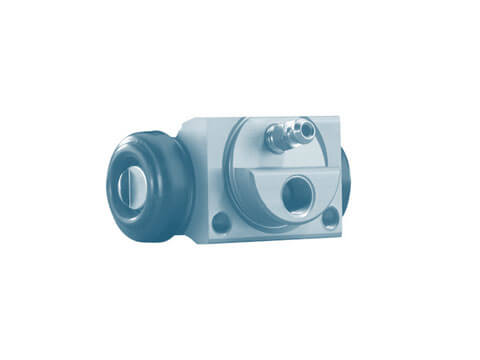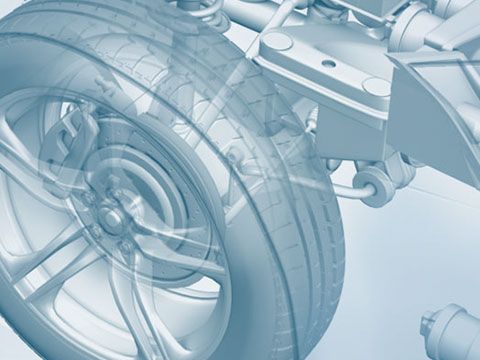ABS control unit
To upgrade a conventional brake system with the ABS function, you need additional components. The ABS control unit is the key element here, without which the ABS system would not function.
Function
The ABS control unit has the task of processing the speed detected by the wheel speed sensors. The ABS control unit uses these signals to control the braking force for each wheel individually. Through varying or maintaining the brake pressure, the wheels are prevented from locking: the vehicle can brake in the best way possible and remain manoeuvrable at the same time. ABS control is split into three phases that occur in quick succession: • Maintaining the pressure • Decreasing the pressure • Increasing the pressure The ABS control unit is generally located in the engine compartment. It is hydraulically powered and positioned between the brake master cylinder and the wheel brakes, but can also be located in other areas within the brake system.
Design
The ABS control unit consists of the Hydraulic Control Unit (“HCU”: hydraulic block with valve, integrated pump with electric motor, low pressure storage system) and the Electronic Control Unit (“ECU”: coil carrier with electronic control unit). The ABS control unit is also referred to as the “HECU”, due to the combination of these two components. With a faulty ABS control unit, usually it is a question of full replacement, and rarely the exchanging of individual components. However, in the event of a faulty HCU, automotive workshops can simply replace the hydraulic unit instead of the full ABS control unit. This helps to avoid expensive replacement of the full system. The replacement of the faulty component with a corresponding new part also means the best possible safety for the driver. This makes repairing the ABS simpler, faster and, therefore, also cheaper for the driver.
Safety
It is inconceivable to think of a modern-day vehicle that doesn’t have ABS. The anti-lock braking system enables you to brake with short distances but maintain control of the car. As a result, it contributes to safety in road traffic.
Protection of the environment
ABS control units are high-quality, high-priced system components. In the event of replacement, these flow into a recycling cycle. This means when it comes to trade, the devices are part of a deposit scheme to ensure that the manufacturer gets the old parts back again. The manufacturer can then carry out disruption and function testing on the old parts, recondition the parts or specifically scrap them.




